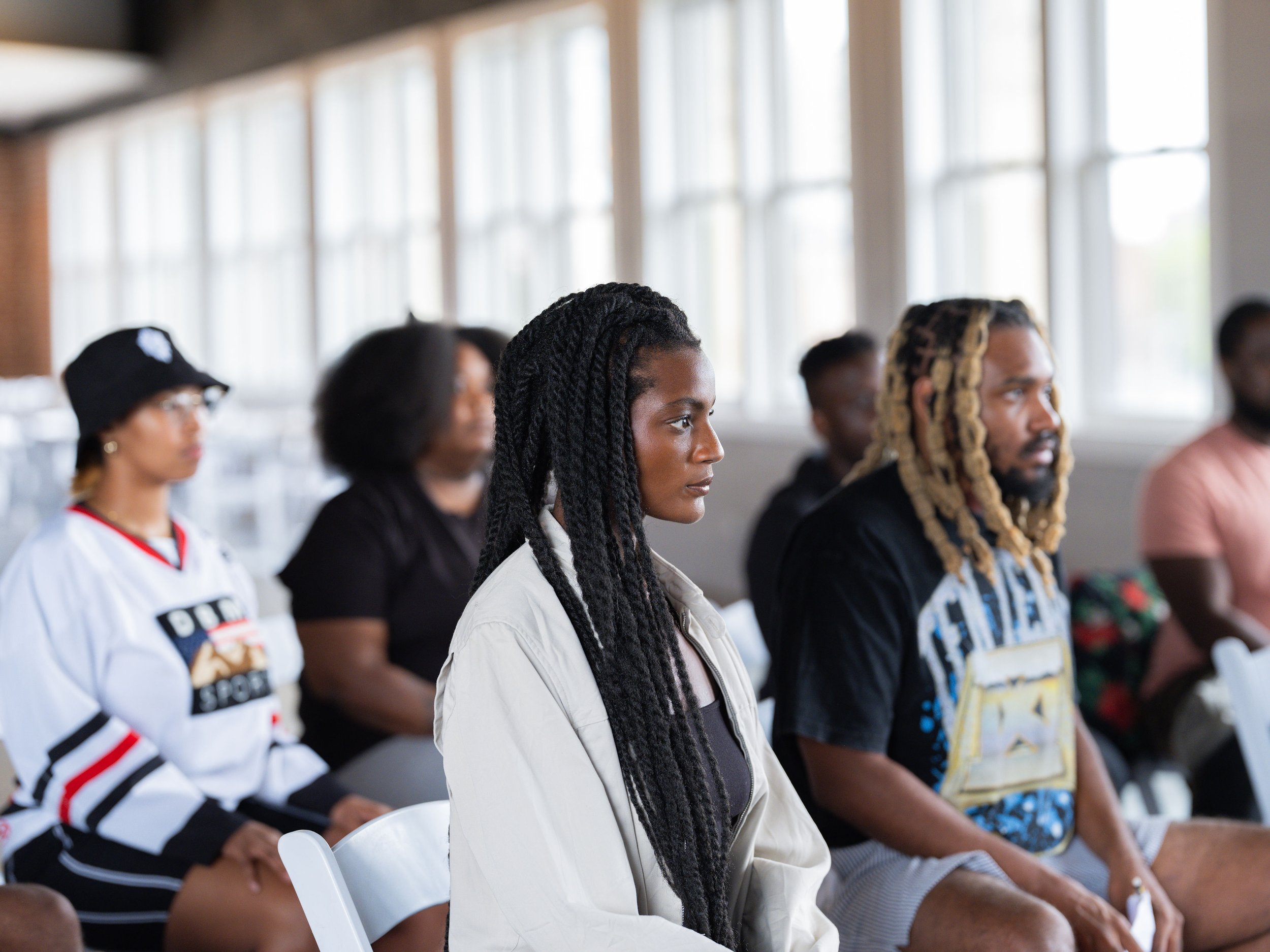Make it stand out.
Whatever it is, the way you tell your story online can make all the difference.
A Straight Forward. Forward From Mvstermind.
If I’m being more honest than some say I should, being a “Creative” in Saint Louis means you got one foot kicking ass in the scene and another foot prepared to walk on a one-way flight to wherever will honor and respect your worth.
Personally, I endorse making the best decision for whatever journey speaks to you.
The question is:
Did you have your bags packed for you? Or did you have to damn near evacuate this city just to keep your dreams alive?
This hits deep because as a “successful” full-time creative, I’m often challenged with the very question when do what I'm doing: does this make any sense? Well, no need to answer that question alone.
We at Mvstercamp decided to create “Creative Industries” to not only bring together the 16 distinct creative industries but to make sure our mission actually makes any achievable sense. That means we have to be in community with the industries that our industry economically communicates with.
In simple terms—duh. But somehow in Saint Louis, we forgot that very notion. Some might say it was designed to be that way, and others might say the Delmar Divide is… well… a myth.
During our event, we exchanged, connected, created, and then we got down to business and discussed the state of the creative.
What the Numbers Say
And let’s be real, the numbers back what we already know:
The arts in STL generate nearly $900 million a year, but a huge number of artists are still struggling (STLPR Report)【70】.
Almost half of Black, Indigenous, and other creatives of color in STL said they’re either just getting by or finding it difficult to survive, compared to about one-third of white creatives (STLPR Report)【71】
Black creatives in STL are more likely to self-produce, go independent, and build their own platforms—because institutional funding and gallery access aren’t designed for us (STLPR Report)【71】.
So yeah, the numbers prove the potential is here, but access to space, tools, resources, and knowledge is still lacking in our creative community.
No, This ain't a vent session. What you are about to read is somewhat of an artist-led study on artists—born from brainstorming sessions where we broke into groups and answered key questions at our Creative Industries event on 8/8/2024. This is paired with research studies and articles that back up our personal findings.
Personal Agency & Empowerment:
Owning Your Path
What specific skills or knowledge are essential for creatives to gain agency and successfully navigate their careers?
Learn the business, not just the craft.
Build resilience and stay adaptable.
Find a workflow that keeps you in your zone.
Keep your creative energy protected.
“Artists need to be their own business leaders, not just dreamers.”
The Creatives Count Report found that 36% of creatives in STL are barely getting by financially, which is worse than the national average【70】. That’s a problem. We need to stop romanticizing the starving artist struggle and start equipping ourselves with real financial literacy and strategic thinking.
Collaboration & Community:
We Move Better Together
How can creatives from different industries collaborate to amplify their impact and create new opportunities?
Show up for local events.
Build networks and avoid gatekeeping.
Identify strengths in others and build with them.
One person said it straight up: “Community is the backbone of success. The more we uplift each other, the more we all win.”
But STL has been missing a centralized creative infrastructure (ULI Report)【71】. That’s why the ULI Report pushes for official creative hubs. The city is waking up—we need to be at that table when they start building【71】.
Navigating Challenges:
Breaking Bread & Breaking Barriers
What strategies can creatives employ to overcome financial instability and maintain motivation in the face of challenges?
Diversify income streams.
Barter, trade, and pool resources.
Document your wins and losses.
Put some money aside every check.
Somebody dropped a gem: “The struggle is real, but if we share resources, we can thrive instead of just survive.”
The AEP6 Study confirms that STL creatives are generating serious revenue—$35.74 per person per event【70】. That means people are spending money in our industry. Let’s make sure it lands in OUR hands.
Innovation & Adaptation:
Staying Ahead of the Game
How can creatives leverage technology and digital platforms to expand their reach and sustain their careers in rapidly changing industries?
Learn SEO, SEM, and digital branding.
Master the art of social media.
Use tech to present your work in new ways.
A participant put it bluntly: “If you’re not using digital tools, you’re already behind.”
The Sound Diplomacy Report says STL has a chance to be a national leader in music-driven economic recovery【71】.
Vision & Long-Term Goals:
Building the Legacy
How can creatives balance their artistic vision with the practicalities of making a living while ensuring their work has a lasting impact?
Find balance between passion and sustainability.
Set small, consistent steps towards big goals.
Use vision boarding and planning to stay on track.
One artist said, “Breaking big dreams into small, daily actions makes them feel real.”
And 72% of STL creatives work across multiple disciplines【70】. That means we’re not just one-trick ponies. We’re building entire ecosystems. Let’s treat it that way.
Policy & Advocacy:
The Fight for Resources
How can creatives collectively advocate for policies and resources that support creative work and cultural development?
Push for more grants and funding.
Put artists in leadership positions.
Stay involved in community and political discussions.
“If we don’t advocate for ourselves, who will?”
The AEP6 Study says arts in STL generated $155.2 million in tax revenue【70】. If we’re bringing that kind of money in, we deserve more investment. And the ULI Report further highlights that investing in creatives, especially BIPOC entrepreneurs, will bolster the city's cultural and economic resilience【71】.







